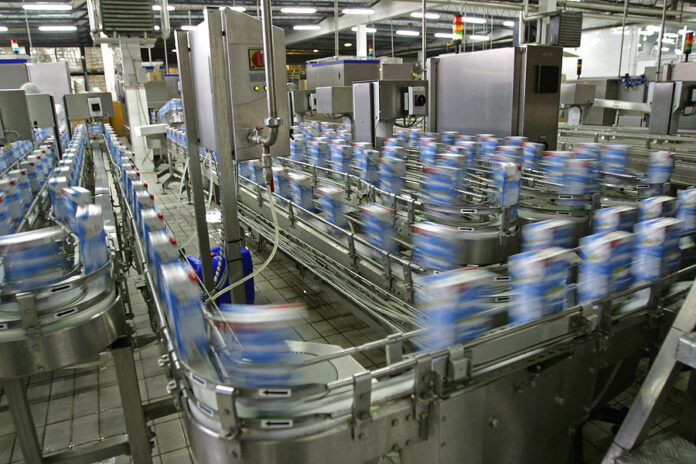
By Sogyel Lhungay, Vice President of Insights, Yogi’s
Key takeaways:
- Consumer price sensitivity is surging: Food and beverage brands saw an 11.3% increase in price and value complaints in April 2025 compared to the previous year, driven by tariffs, supply chain disruptions, and lingering inflation concerns from 2022.
- Real-time monitoring beats lagging indicators: Brands need to track early warning signs through product reviews, social media, and customer service channels rather than relying solely on sales data, watching for phrases like “not worth the price” that predict loyalty drops.
- Agile response strategies are essential: Successful brands are implementing always-on feedback dashboards and rapid response protocols, using targeted promotions and transparent communication about cost drivers to maintain customer trust without permanent price cuts.
Trade tariffs and pricing volatility are putting serious pressure on food and beverage brands, and consumers are making their frustrations clear. In our analysis of more than 263,000 records across 1,300 food snacking products – including chips, candy, pretzels, and chocolate – mentions of price and value concerns surged 11.3% in April 2025 compared to the same time last year. That’s the steepest year-over-year increase of any category we track, outpacing personal care and household electronics.
This shift isn’t surprising. Consumers, still cautious after the 2022 inflation spike, are increasingly selective and price sensitive as rising costs, supply chain disruptions, and tariffs drive up shelf prices. And they’re voicing those concerns through product reviews, social comments, and customer care channels such as chat, email, and phone calls.
For food and beverage brands, this presents both a risk and an opportunity. Those that lead will be the ones continuously monitoring consumer price-to-value perception and responding decisively when early signs of strain appear.
Early warning signs of customer dissatisfaction
One of the biggest mistakes food and beverage brands can make in a volatile market is assuming consumers will quietly absorb price increases. But shoppers often signal pricing frustration early; with teams missing these signs because they’re looking in the wrong places or relying on lagging indicators like sales data and market share reports.
To stay ahead, brands need to regularly monitor fast-moving feedback channels where value perception issues surface first. Product reviews, social media threads, customer service inquiries, and in-app feedback are rich, real-time sources of insight. The language consumers use in these channels often changes in predictable ways when price sensitivity spikes.
Watch for shifts in phrasing: complaints like “not as good as it used to be,” “not worth the price,” or “I’ll wait for a sale” usually precede a drop in repeat purchases or brand loyalty. Even subtle comments about portion sizes, recipe tweaks, or increased competitor comparisons should trigger closer review. It’s not just the volume of price-related feedback that matters – it’s how quickly those mentions rise and what kinds of trade-offs consumers start mentioning.
Operationally, this means moving beyond rote periodic reviews of sales data and customer care summaries to implementing always-on listening systems and dashboards. Brands that detect and quantify these early signals in real time can adjust pricing, promotions, and messaging with far greater precision, often avoiding revenue hits and preserving brand trust in the process.
Using data to adjust pricing and promotions
Once early signs of price-to-value strain emerge, the next step is turning those signals into action. It’s not about reacting to isolated complaints but identifying consistent patterns and using them to guide smarter pricing and promotional decisions.
Feedback trends can reveal which products, formats or categories are under the most pressure. For example, if value concerns cluster around essential staples, which are usually inflation-resistent, a brand may consider offering value oriented multi-packs that offer an alternative to private label brands. Furthermore, if consumers are concerned that inflation will keep rising in the future, they may buy more of their favorite products in the near term to create a stockpile. In that case, sales data may show a misleading spike in revenue that is erased in future quarters. Real-time data helps brands pinpoint where consumers are most sensitive and where there’s more room to maneuver.
The same applies to promotions. Data can highlight when and where short-term offers might help ease pricing frustrations without resorting to list price (MSRP) adjustments that are more difficult to retreat from. For example, if feedback suggests growing price resistance in a specific region or retail channel, targeted multipack deals, loyalty perks, or time-limited discounts can help retain shoppers without sacrificing long-term pricing power.
Crucially, this approach demands agility. Quarterly pricing reviews won’t cut it in today’s unpredictable geopolitical environment. The most successful brands right now are integrating real-time feedback dashboards and rapid response protocols that allow commercial, pricing, and insights teams to quickly evaluate risks and pivot strategies as needed. Tightening this feedback loop between consumer sentiment, pricing decisions, and retail execution ensures that pricing actions are timely, targeted, and in step with shifting shopper expectations.
Transparent communication reinforces value
In volatile pricing environments, being upfront and honest with customers about the changes should be a high priority. Brands need to clearly explain what’s driving price increases – whether it’s tariffs, supply chain issues, or rising raw material costs – so consumers understand the reasons behind the adjustments. This won’t stop every complaint, but it’s a good start to preventing frustration from escalating. When customers feel informed, they’re less likely to assume the worst or switch brands immediately.
To make this work, communication should be simple and consistent. Brands can use labels, FAQs on their websites, social media updates, and customer service scripts to ensure the message reaches shoppers wherever they interact with the product. Regularly updating customers as situations evolve also shows that the brand is listening and values transparency.
It’s also important to highlight any steps the brand is taking to maintain product quality or value despite higher costs. For example, sharing improvements in sourcing or production shows customers that they’re still getting a worthwhile product.
Final thoughts
Navigating pricing challenges is never easy, but brands that listen closely, act quickly, and communicate openly will turn pressure into opportunity. By staying connected to consumer concerns and responding with transparency and agility, food and beverage companies can strengthen loyalty and build lasting value in even the most volatile markets.
 Sogyel leads Yogi’s Insights team, working with market leaders in diverse industries such as Health & Beauty, Food & Beverage, Software, and Consumer Electronics. As a subject matter expert in Consumer Feedback Analysis, Brand Management, and Data Science, he established Yogi’s Insights team, which offers consulting and BI reporting to Yogi’s enterprise clients. He has a background in M&A advisory in the CPG space with an MBA from UVa Darden and a BA in Economics from NYU.
Sogyel leads Yogi’s Insights team, working with market leaders in diverse industries such as Health & Beauty, Food & Beverage, Software, and Consumer Electronics. As a subject matter expert in Consumer Feedback Analysis, Brand Management, and Data Science, he established Yogi’s Insights team, which offers consulting and BI reporting to Yogi’s enterprise clients. He has a background in M&A advisory in the CPG space with an MBA from UVa Darden and a BA in Economics from NYU.

Credit: Source link













